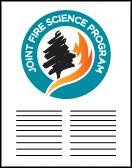United States Joint Fire Science Program
Document Type
Article
Date of this Version
2008
Citation
JFSP # 05-2-1-105
Abstract
We developed 3-year post-fire mortality models for 12 western conifer species by pooling data collected from multiple fire-injury studies. Models were developed for white fir, red fir, subalpine fir, incense cedar, western larch, lodgepole pine, whitebark pine, ponderosa pine, Jeffrey pine, sugar pine, Engelmann spruce, and Douglas-fir. Two sets of models were created, one for use in pre-fire planning where only crown injury and DBH were potential variables, and a second, optimal model for use in post-fire planning that used all significant variables. Predictive accuracy of all models was compared to the accuracy of the mortality model currently used in the First Order Fire Effects Model (FOFEM), BehavePlus, and the Fire and Fuels Extension to the Forest Vegetation Simulator (FFE-FVS). These new models will be added to FOFEM version 5.7 and BehavePlus 4.5. The mortality options in FOFEM will also be expanded. We also examined the accuracy of bark char codes to predict cambium injury at the base of trees after fire and made management recommendations for when it is appropriate to use bark char codes in place of direct cambium sampling.
Included in
Forest Biology Commons, Forest Management Commons, Natural Resources and Conservation Commons, Natural Resources Management and Policy Commons, Other Environmental Sciences Commons, Other Forestry and Forest Sciences Commons, Sustainability Commons, Wood Science and Pulp, Paper Technology Commons



Comments
US government work.